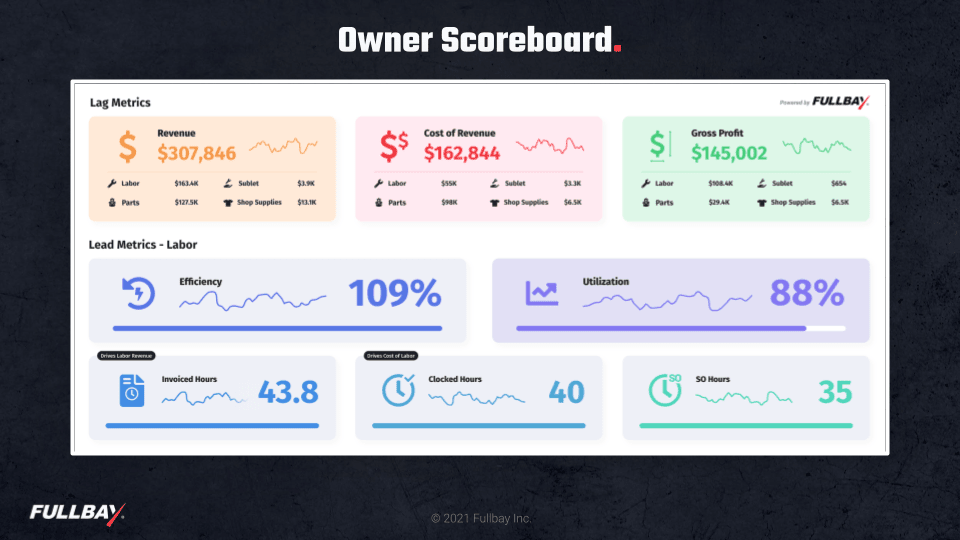In The Bay: The Shop Owner’s Scoreboard

The owner scoreboard
Imagine coaching a football team and never knowing the score until a few days after the game. Would that impact your play calling? Would it demotivate the team? Of course! It’s crazy to think any team would operate this way.
Yet this is exactly how too many shop owners run their business. They might calculate shop efficiency once the numbers roll in at the end of the week, but there’s no real-time scoreboard. They make assignments and call plays based on gut feeling combined with whatever they happen to hear or see.
There’s a better way to run a shop. As an owner, just a little effort can get you a scoreboard that shows you what’s going on in the shop in real-time. This lets you make midday pivots like sending help to a struggling tech, or finding an alternative part on a job that’s taking up too much time in a bay.
So, what goes on an owner scoreboard? First, it’s important to understand the difference between a “lag metric” and a “lead metric.”
Lag vs. Lead Metrics
A lag metric is like the score in a football game. It tells you if you’re winning or losing, and it shows what happened in the past. A lead metric is like total passing yards or running yards. Lead metrics predict lag metrics. Generally speaking, the more offensive yards, the higher the score.
So in a commercial shop, your lag metrics are revenue and profit, and your lead metrics are things like invoiced hours (total hours invoiced to customers) and clocked hours (total hours worked by your technicians). Generally speaking, the more invoiced hours, the higher the revenue. And the higher your efficiency (invoiced hours divided by clocked hours), the higher the profit.
Example Scoreboard
Here’s an example owner scoreboard:

How to Use It
With a scoreboard in place, and an understanding of the difference between lag and lead metrics, you will not be so tied to the shop. A lot of what used to require you to physically walk around the shop to investigate can now be done by just checking your scoreboard. So if that scoreboard is accessible on a phone or other mobile device, you can check it whenever you want—whether you are in the shop or not.
Another major advantage to having a scoreboard with real-time information is that your team can have one, too. And these other scoreboards can be tailored to specific roles in the shop, like the service manager, parts manager, technicians, and the office. When you see a metric on your scoreboard that needs attention, you can reach out to someone else on your team to chase it down without having to provide a detailed explanation of what’s going on. That’s because they’ll likely see the same thing on their scoreboard.
The more you can get your team into one system, with scoreboards tailored to their roles, the better your shop will run. It’s just like the scoreboard keeping a football team motivated. When everyone knows the score and other key stats, they start to see how they fit into the big picture. That causes engagement, productivity, and morale all to go way up.
If you’re not already a Fullbay customer and need help putting a scoreboard in place in your shop, we would love to show you what we’ve built.
